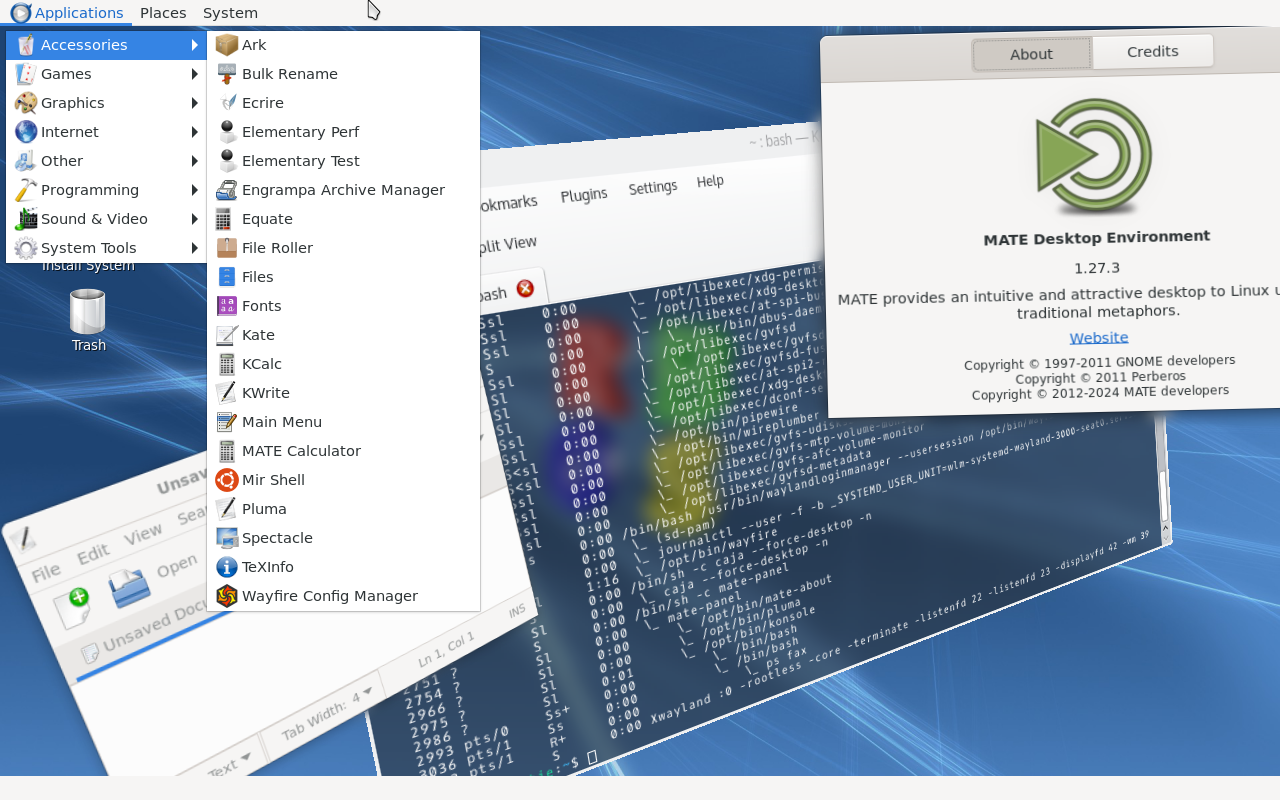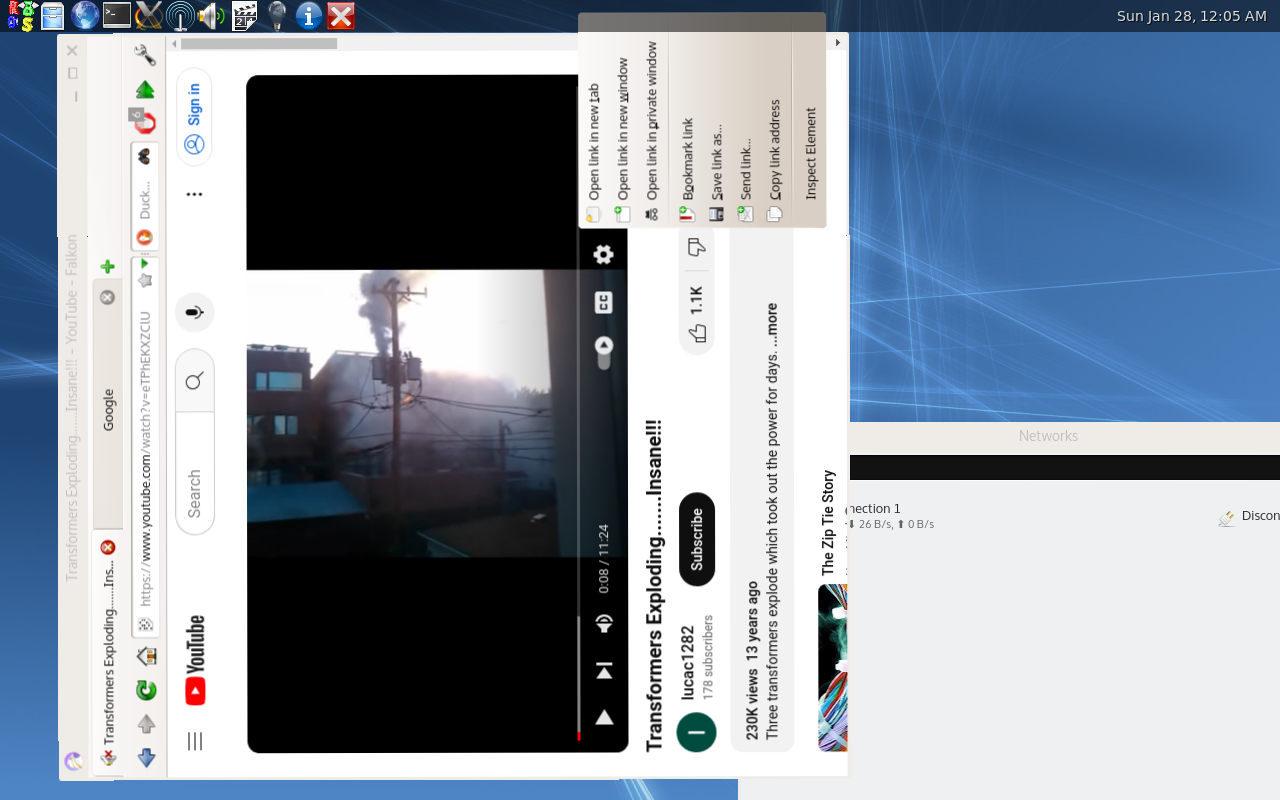Not really a Linux distro, but TempleOS
Maybe not some obscure ones, but here are some lesser known ones:
Talos Linux. It’s an immutable operating system designed specifically to deploy kubernetes.
OpenSuse Harvester Think Proxmox, but instead of VM’s and LXC containers, it’s VM’s and Kubernetes.
XCP-NG is a RHEL based distro designed for managing Linux virtual machines using the xen hypervisor, as opposed to KVM. Think Proxmox, but RHEL and Xen (also no LXC). However, it does not come with a web ui out of the box, you have to deploy it yourself. Technically, XCP is a Xen distribution, since Xen is a kernel with nothing but a hypervisor that runs under the main distro, but the primary management virtual machine is RHEL based, and uses Linux.
Speaking of Proxmox, Proxmox is technically a Linux distro.
SnowflakeOS is a project that aims to bring a GUI focused experience to NixOS.
TurnkeyLinux (site is loading very, very slowly for me right now) is not a single distribution, but rather a set of debian based distributions that are designed to be turnkey appliance virtual machines that contain and host a specific app. To deploy the app, all you have to do is set up the virtual machine.
Now, here are some not-linux, but interesting distros:
SmartOS. They ported KVM to unix, and also can use Linux syscall translation (similar to wine) to run apps in containers as well. There is also Bhyve. It’s a very interesting hypervisor platform.
OmniOS is similar. Bhyve, KVM, and Linux syscall translation in containers.
Sabayon Linux. I’m not sure if it’s still releasing updates, the main website is dead. It was based on Gentoo and later funtoo, but had a package manager of precompiled binaries. You could still use emerge if you wanted to. Definitely a weird and interesting distro
Blend OS is trying to do the declarative nixos thing but with an arch base. That’s pretty cool.
ClearOS was Intel’s attempt at an immutable os. From what I remember it was really fast.
Edit: actually it clear Linux not clearOS. Edit: also clear Linux is stateless. I don’t know, there’s a lot about it I don’t understand
Rebecca Black OS.
It is the only Linux distro to date built around Weston, using Wayland’s full capability:

It doesn’t include any Rebecca Black theming or is related to her in any way.
It’s just called that cause the dev is a fan of hers.From the name, I expected a Hannah Montana Linux type distro.
Tell me if has a special “Friday” desktop at least.
I’m pretty sure that screenshot is Wayfire, not Weston.
right. This is Weston (same distro):

hyperbola
they have a wiki with insane nonsens about why they don’t package certain things. Example:
pam
Package has different security-issues and is not oriented on the way of technical emancipation as Hyperbola is trying to adapt lightweight implementations.https://wiki.hyperbola.info/doku.php?id=en%3Aphilosophy%3Aincompatible_packages
Wow, you weren’t kidding.
Wait… they’re militant enough about Free Software to refuse to package anything even slightly non-Free, but their “final goal” is to switch the kernel to BSD (i.e. away from copyleft)? WTF?
but their “final goal” is to switch the kernel to BSD (i.e. away from copyleft)?
HyperbolaBSD is a hard fork, that relicenses the OpenBSD kernel as GPL (as permitted by permissive licenses.) HyperbolaBSD has already dug into the OpenBSD source tree and discovered numerous licensing issues. https://git.hyperbola.info:50100/~team/documentation/todo.git/tree/openbsd_kernel-file-list-with-license-issues.md
HyperbolaBSD will be a truly libre distro that takes advantage of copyleft, while moving away from the major issues Linux is stepping into too.
Ah, that’s different then!
Hmm…
From https://wiki.hyperbola.info/doku.php?id=en%3Amanual%3Acontrib%3Ahyperbolabsd_faq:
HyperbolaBSD is under a progressive migration by replacing all non GPL-compatible code. It will be replaced with new compatible code under Simplified BSD License. We do this in order to incorporate GPL code from other projects such as ReactOS, as well new code from scratch.
It’s not clear to me that relicensing the existing code to GPL is what they’re planning on doing; it sounds more like they’re going to mix in GPL code but not change the existing files to GPL en masse after they finish harmonizing them to two-clause BSD.
Frankly, IMO that’s too bad: I’d love to see them make the whole shebang GPLv3-or-later
Related question: is all Linux kernel code required to be licensed GPLv2-only, or are individual contributions allowed to be GPLv2-or-later? I’d be nice to see if that project (and stuff like HURD and ReactOS) could benefit from at least some Linux contributions, even if they can’t copy it wholesale.
afaik Linus is against GPLv3 in his Linux project https://www.youtube.com/watch?v=PaKIZ7gJlRU
It’s an ancient divide in parts of the FOSS community that believes copyleft licenses are not “free” because they force you to license contributions under the same license.
Yeah, I know, but I would’ve expected a distro that describes itself as “GNU/Linux-libre” would fall on the other side of it!
No one thinks this. Even permissively licensed BSD operating systems package GPL software and accept it as Free Software.
Why did I read all of this.
was that translated into english from another language?
I love how they blended FAQ with meth-induced psychosis rambling.
I’ve gotta give them kudos for sticking to their very strict values, but holy hell is this hard to parse
Certain things? Fucking luddite idiots don’t package 99.9% of software.
AIX Unix from the 1980s is literally more useful than that heap of garbage
Why so much rage?
Yes, Hyperbola is very ideological and super strict, but it was always meant to be that way - to provide a system that works in some way and at the same time is as ethical and “clean” as possible. Some people value it over anything, and for them, Hyperbola is a good pick.
2 days ago my friend found an old SATA hard drive and gave it to me to check what’s on it, and me, not having a disk station or anything, and against all better judgment, I just swapped the disk in my laptop for my friend’s, and instead of my laptop being fried it turned out the disk was running something called Crunchbang Linux
I lived that distro. Unfortunately it got discontinued at some point.
Yup, in 2015, more or less, from what I remember reading the Wikipedia page. Got superceded by bunsenlabs, like notthebees said.
That’s what bunsenlabs is for.
Crunchbang++ is alive and we’re using it
Smoothwall. I used to run it a lot back in the early 2000s for personal use and even helped set up a couple small businesses with it but I don’t hear of anyone else using it these days, people seem to love openwrt and pfsense more.
It was great for just taking any old x86 machine and making a powerful, fully featured firewall/router out of it, including a VPN server, all through a web interface. Nowadays that’s boring shit but in 2002 it was pretty cool.
Good old Smoothie. Served me well back then. I think it went commercial at some point.
We had this as the firewall in our school! I remember bypassing it in so many ways with Google DNS and whatnot.
Any reason to use this over opnsense?
it’s main feature is that it completely redefines the system’s root directory structure. the only reason i even know it exists is because i’m friends with one of the creators
I hear you saying “not compatible with FHS” but then extra words I no longer need to hear.
Gobo Linux has to have been the distro I was looking forward to most too. I really hope it picks up because it’s design philosophies. Absolutely phenomenal.
No one mentioned Bunsenlabs or Crunchbang Linux here, but they aren’t really that obscure.
Archbang maybe more?
Not really obscure
Suicide linux. Nobody can run it for more than a day
Edit: i just searched “suicide linux” to see if it still exists and one of the top results was ian murdock’s wiki page, :(
“suicide linux”
Looked it up with quotes and the first update in the first search result:
Update 2011-12-26
Someone has turned Suicide Linux into a genuine Debian package. Good show!
:(
United Linux - the famous Red Hat Enterprise Linux killer!
I worked on that.
It was SuSe with any branding or tools ripped out, the carcass kicked over the fence for the rest of us to try to make an OS out of.
It had no chance. What we got was a bleeding corpse after SuSE had a sellable product to compete against us all with.
It killed turbo, it killed conectiva and it killed openlinux. Horrible thing.
Rarely hear about DSL anymore, http://www.damnsmalllinux.org/
It was dead for a long time, was replaced in spirit by Puppy Linux, and only recently was reactivated.
That was my go-to long ago
Take your pick from the Linux family tree
Man artix isnt there
I don’t see nixos in there!
Should hyprland be in the table or are Wayland Compositors ignored? 👀
it’s only distros
Sabayon Linux
I used it for a few years, great distro. I think it’s dead now. It was based on Gentoo but with thoughtful defaults and a very good binary package manager.
also Funtoo Linux, but i never really used it
I used Sabayon for a bit too. It was basically “Gentoo made easy” with a simpler installer and as you said a binarypackage manager rather than compiling packages from source. It’s wasn’t 100% completely dead after dropping the Sabayon branding, it morphed into Mocaccino Linux, but when they did so they re-based it on Funtoo, which is also now dead.
Shark Linux








